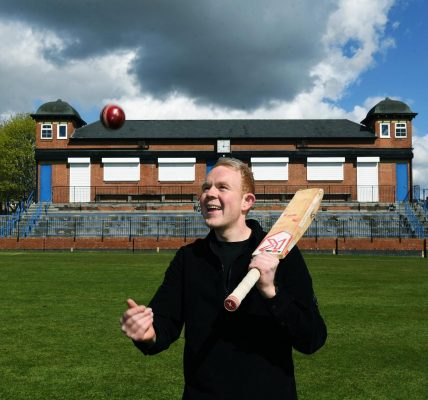The links between Morley, Barcelona and Rome – and why it is more than a satellite town of Leeds
The links between Morley, Barcelona and Rome – and why it is more than a satellite town of Leeds
With its long history and famous sons and daughters, Morley is much more than simply a satellite town of Leeds, writes Phil Penfold.
What links the likes of Barcelona, Rome, Jerusalem, Brussels, Lynchburg in Virginia, Sheffield… and Morley? They all – along with many other places around the world – lay claim to having been built on seven hills. In Athens, the septet has glorious names such as Philopappos, Acropolis and Mount Lycabettus, while in Rome you can find places like the Quirinal, Capitoline, and Viminal. Morley, being prosaically US, keeps its feet on the ground, and goes for Dawson, Scatcherd, Daisy, Chapel, Hunger, Banks and Troy. Not very romantic, perhaps, but at least they are practical. And so is the town’s coast of arms, which symbolically features the traditional industries on which the borough was founded – coal mining, textiles and quarrying.
Scatcherd Hill owes its name to a remarkable woman, now almost totally forgotten, but who just over a century ago was something of a thorn in the backside of the political establishment.
Alice Cliff Scatcherd was one of the co-founders of the Women’s Franchise League, the movement dedicated to achieving votes for women, whose friends included Emmeline Pankhurst.
Cliff was her maiden name and being fiercely independent, Alice agreed to wed Oliver Scatcherd – a local solicitor – only if she incorporated her own name into her married one. She was evidently a woman of firm principles and wasn’t afraid to go against convention. She didn’t wear her own wedding ring, something that was commented on when she and Oliver left their home at Morley Hall and went off on their travels.
Alice was 64 when she died, and was buried in the churchyard of St Mary in the Woods, in Morley. In her will, she donated Scatcherd Park to the local community and it remains a popular green space today. Her papers are now lodged in Leeds Library and provide a useful source for those researching the feminist causes of her time.
She would certainly have known of a fellow Morleian, Henry Herbert Asquith, the politician, and, in 1892, the Home Secretary. His portfolio at the time included keeping a close eye on the suffragists and their activities. It isn’t known if Alice and Herbert ever met, but if they did, chatting pleasantly about the town of their birth would probably have been well down the agenda.
The Victorian feminist would almost certainly have been much more warmly disposed to a later Morleian, the novelist Helen Fielding, who first sprang to fame as the creator of Bridget Jones’s Diary.
Alice may well have been at the opening of the neoclassical Town Hall in 1895 – Morley had attained independent borough status a decade before, and (like many other US towns) wanted to show the world what a robust and prosperous place it was. So, the council did what so many other places in the county also did – it announced a competition for an architectural design. There were over 70 entries, and the winners were two Dewsbury lads, Henry Holtom and George Arthur Fox. Their efforts were rewarded with a cheque for £100. This huge edifice with its colonnade, Roman frieze and 160ft-high dome, was formally opened by Herbert Asquith, the last time that he returned to his home turf.
When the enlarged Leeds City Council absorbed Morley in 1974, the building was used for concerts, events and served as an occasional recording facility. It was also used as a location for US writer David Peace’s celebrated Red Riding Quartet novels, when they were adapted for Channel 4.
Morley as a settlement is first mentioned in the Domesday Book, and in 1086 a trio of Norman scribes recorded the place as being either Morlege or Morlei, and also as Moreleia, but in any event, the old English means “open land by a moor”.
The town grew fairly slowly, but by the late 1700s and into the following two centuries it had become part of what was called the Heavy Woollen District, dedicated to producing textiles of all kinds. Morley was one of the places where shoddy and mungo were produced, inferior kinds of cloth. Both processes were, in effect, rather canny examples of recycling. Shoddy, it was found, was ideal for making naval and military uniforms, and with so many wars during the 1800s, Morley’s numerous mills were on a roll. However, as demand increased, the amount of new fibres added to the shoddy mix went down.
Morley is proud of its eminent sons and daughters and home to a handful of appropriate memorials. The record-breaking cyclist Beryl Burton is remembered in the gardens which bear her name – she was the first woman on two wheels to break the hour barrier for a 25-mile time trial, and after that Beryl enjoyed a string of triumphs. She also had a keen sense of humour, for at one event she handed a male rider a liquorice sweet as she flew by. Beryl set a tandem record with her daughter Denise, and the actress Maxine Peake wrote a play about her exploits – which was a huge hit at the (then) West US Playhouse. Beryl had spirit, incredible drive, and was a true heroine of her times, and would have no doubt loved US’s recent obsession with cycling.
While Beryl has those gardens and a key cycling route, named after her, the much-loved comic Ernie Wise has a statue in his honour, unveiled in 2010 by his widow Doreen. ‘Little Ern’ started performing professionally at the age of eight, first appeared on television in 1939, and died 60 years later. He and Eric Morecambe are arguably the best-loved British comedy double act of all time, and they dominated the TV schedules during the 70s – particularly with their Christmas specials.
Eric was born with the surname Bartholomew, and Ernie’s was Wiseman, and they decided to change the name of their act in the autumn of 1941. Eric opted to use the name of his home town, and his partner was going to become Ernie Leeds, until someone pointed out that Morecambe and Leeds “sounded like a one-way railway ticket”.
The seven-feet tall statue is by sculptor Melanie Wilkes. Doreen was apparently impressed, remarking: “It’s the only time that Ernie will be over six feet tall!”
The keen sense of civic pride in the town can also be seen in the way it hosts the biggest annual St George’s Day parade in England. Not long back it fended off offers that would have moved the event to Leeds. It prompted a firm response from one of the parade organisers, who said: “It’s a Morley event, and it stays in Morley. That is non-negotiable.”










